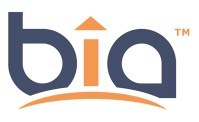
Undertaking a Successful Project Audit
A project audit provides an opportunity to uncover the issues, concerns and challenges encountered in the execution of a project. It affords the project manager, project sponsor and project team an interim view of what has gone well and what needs to be improved with the project to successfully complete it. If done at the close of a project, a project audit can be used to develop success criteria for future projects by providing a forensic review. This review will provide an opportunity to learn what elements of the project were successfully managed and which ones presented some challenges. This will help the organization identify what it needs to do so that mistakes are not repeated on future projects.
Regardless of whether the project audit is conducted mid-term on a project or at its conclusion, the process is similar. It is generally recommended that an outside facilitator conduct the project audit. This ensures confidentiality but also provides the team members and other stakeholders with the opportunity to be candid. They know that their input will be valued and the final report will not identify individual names, rather it will only include facts. It is common that individuals interviewed during the project audit of a particularly badly managed project will find speaking with an outside facilitator provides them with the opportunity to express their emotions and feelings about their involvement in the project and/or the impact the project has had on them. This “venting” is an important part of the overall audit.
A project audit consists of three phases:
Phase 1: Success Criteria and Questionnaire Development
Phase 2: In-depth Research
Phase 3: Report Development
Phase 1 – Success Criteria and Questionnaire Development
- Success Criteria Development
- Interview the core project sponsor and project manager to determine their “success criteria” for the project audit. This ensures that their individual and collective needs are met.
- Questionnaire Development
- Develop a questionnaire to be sent to each member of the core project team and selected stakeholders. We find that individuals will often complete the questionnaire in advance of an interview. It helps them to focus their thoughts.
- The actual interview provides the facilitator with the opportunity to gain deeper insights into the interviewee’s comments. The questionnaires help them to reflect on the project’s successes, failures, challenges and missed opportunities.
- Project Audit Questions
- There are many questions that can be asked. It is easiest to develop open-ended questions for the interviews. These questionnaires can be used for team members and/or other stakeholders who cannot attend an interview.
- Develop the questions so that they will help to identify the major project successes; the major project issues, concerns and challenges; how the team worked together; how vendors were managed; how reporting and meetings were handled; how risk and change was managed, etc.
Phase 2 – In-Depth Research
- Conduct individual research interviews with the Project Sponsor, Project Manager and Project Team members in order to identify the past, current and future issues, concerns, challenges and opportunities.
- Conduct individual research interviews with stakeholders including vendors, suppliers, contractors, other project internal and external resources and selected customers.
- Assess the issues, challenges and concerns in more depth to get to the root causes of the problems.
- Review all historical and current documentation related to this project including;
- Team Structure
- Scope Statement
- Business Requirements
- Project Plan
- Milestone Report
- Meeting Minutes
- Action Items
- Risk Logs
- Issue Logs
- Change Logs
- Review the Project Plan to determine how the Vendor Plan has been incorporated into the overall project plan.
- Interview selected Stakeholders to identify and determine what their expectations of the project had been and to identify to what extent their expectations have been met.
- Review the Project Quality Management and the Product Quality Management to identify the issues, concerns and challenges in the overall management of the project and to identify the opportunities that can be realized through improvements to the attention of project and product quality.
- Identify the Lessons Learned that can improve the performance of other future projects within the organization.
Phase 3 – Report Development
- Compile the information collected from all of the interviews.
- Compile the information collected from individuals who only completed the questionnaire.
- Consolidate the findings from the project documentation review.
- Identify the issues, concerns and challenges presented through the review of the Project Quality Management and Product Quality Management plans and isolate the opportunities you believe may be realized.
- Identify all of the project’s issues, concerns and challenges.
- Identify all of the project’s opportunities that can be realized through this report’s recommendations.
- Identify the Lessons Learned that can improve the performance of future projects within the organization.
- Finalize the creation of the report and recommendations on the basis of the findings and present this detailed report and recommendations including the road map to get future projects to the “next level” of performance.
Conclusion
The purpose of a project audit is to identify “Lessons Learned” that can help improve the performance of a project or to improve the performance of future projects by undertaking a forensic review to uncover problems to be avoided. In this way, project audits are highly beneficial to the organization and provide the following multitude of outcomes:
- Development of “Lessons Learned” on the project that can be applied to both the organization and its vendors.
- Development of strategies, which if implemented within the organization, will increase the likelihood of future projects and change initiatives being managed successfully.
- Development of project success criteria which might include on-time, on-budget, meeting customer and other stakeholder requirements, transition to next phase successfully executed, etc.
- Recognition of risk management so that risk assessment and the development of associated contingency plans becomes commonplace within the organization.
- Development of change management success criteria which might include how staff are involved, how customers are impacted, how the organization is impacted, transition to next level of change to be initiated, etc.
- Development of criteria that will continue the improvement of relationships between the organization and its vendors, suppliers and contractors regarding the management of projects.
- Identification of the Lessons Learned on the project that can be applied to future projects within the organization.



